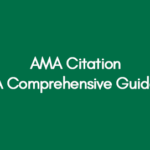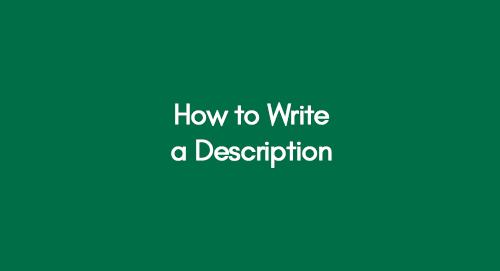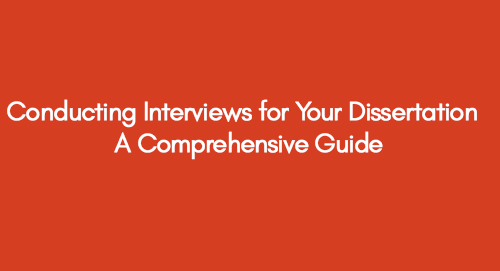
AMA Citation: A Comprehensive Guide to Citing Sources in AMA Style
July 13, 2023
How to Write a Critical Analysis? | A Step-by-Step Guide
July 27, 2023Description writing is a type of writing that provides detailed information about any subject. It is used to create a vivid picture of a place, person, or object for the reader. It utilizes sensory language to make the description more captivating and immersive. It stimulates the reader's senses, emotions, and imagination, allowing them to experience the subject being described without physically being present.
Writing a description is the art of engaging the audience via words. By acquiring the skill of writing descriptions, you will be able to effortlessly create articulate explanations on any subject throughout your academic and professional journey.
In this article, we will learn how to write a good description and make it captivating, leaving a lasting impact on your audience.
Follow the Points to Write a Good Description
Writing a good description is a skill that can enhance communication and captivate your audience. Here are points that will help you craft a compelling and effective description:
Know Your Purpose
Before beginning to describe a book, topic, or subject, it is important to have clear thoughts and ideas. At this point, you must deliver your concise point that provides the proper knowledge to the reader through your words.
For example;
The Industrial Revolution, a turning point in history, revolutionized manufacturing, transportation, and living standards during the 18th century.
Grab Audience's Attention
Tailor the description to resonate with your target audience. Consider their interests, preferences, and knowledge level to make the content more relevant and engaging.
For example;
🔴"A chilling ghost story with real-life paranormal encounters."
✔️"A collection of spine-tingling tales inspired by folklore and urban legends, perfect for lovers of supernatural fiction.
Engage your readers' emotions by using language that evokes feelings and resonates with their experiences. Be genuine and truthful in your description. Exaggerations or false claims can undermine trust with your audience.
Do use language that evokes emotions and resonates with the reader.
For example,
🔴 "The charity event was successful.”
✔️"The heartwarming stories of the beneficiaries touched the attendees' hearts, leading to an overwhelming outpouring of support."
Be Clear and Concise
Use simple and straightforward language to convey your message. Avoid unnecessary jargon or complicated phrases that may confuse readers.
For example;
✔️Demystifying the basics of quantum mechanics and its fascinating implications in the field of modern physics.
Use Descriptive Language
Paint a vivid picture by incorporating descriptive adjectives and sensory details. Engage your audience's imagination with words that evoke sight, sound, taste, touch, and smell.
Do use descriptive and vivid language to engage the reader's senses.
For example,
🔴"The flower was pretty.”
✔️"The vibrant red rose exuded a delightful fragrance."
Types of Description Writing
Description writing is a versatile form of expression used to vividly depict and convey the details of a person, place, object, or event. Here are some common types of description writing:
Character Description
This type of description involves portraying a character's physical appearance, personality traits, and background in a story or narrative.
Here is an example to help you guide you on how to write character descriptions.
Example:
A character description from J.K. Rowling's "Harry Potter and the Sorcerer's Stone":
“Character: Severus Snape
Professor Snape had a hooked nose, a sallow complexion, and greasy, shoulder-length black hair, which he wore in a curtain around his face. His eyes were black and cold.
In this brief description, J.K. Rowling provides key physical details of Professor Snape's appearance, emphasizing his distinctive features like the hooked nose and greasy hair. She also hints at his cold and aloof demeanor with the mention of his black and cold eyes. The reader gets a clear picture of Severus Snape's appearance and demeanor with just a few lines. This concise yet effective character description sets the foundation for the complex character that Professor Snape becomes throughout the series.”
Emotional Description
Emotional descriptions delve into the feelings and sensations experienced by characters or individuals, evoking empathy and connecting readers to the emotional landscape of the story. There are many emotionally-driven books. However, we can use an emotional description of the book.
Example;
Genre: Contemporary Romance
Description
In the bustling streets of New York City, two souls find themselves entangled in a heart-wrenching journey of love, loss, and second chances. "Torn Hearts" is an emotional rollercoaster that will leave readers breathless, their hearts aching, and their spirits soaring.
Meet Emily, a fiercely independent woman with an unwavering belief in the power of love. Her heart, scarred from a devastating breakup, has taught her to shield herself from vulnerability. But fate has different plans when she crosses paths with Ethan, a brooding musician haunted by the ghosts of his past. Beneath Ethan's tough exterior lies a gentle soul yearning for redemption and a chance to mend his shattered heart.
Their chance encounter ignites a connection neither expected, and they find solace in each other's presence. As their friendship blossoms into something deeper, they embark on a passionate and transformative romance. But the universe has a cruel way of testing love's resilience, and just as Emily and Ethan let down their walls, a series of unforeseen tragedies threaten to tear them apart.
Nature Description
This type of description celebrates the beauty and majesty of the natural world, using sensory details to paint a vivid picture of landscapes, flora, and fauna.
Example;
“
The azure sky stretched endlessly, dotted with cotton candy clouds that lazily drifted across the horizon. Sunlight filtered through the emerald leaves of ancient oaks, casting a dappled shade on the forest floor, where delicate wildflowers swayed in the gentle breeze.”
Importance of Writing Effective Descriptions
Descriptive writing is a powerful tool that adds life and depth to your writing. Effective descriptions breathe life into your ideas and put the reader in the scene where those ideas live.
It is of utmost importance in various aspects of communication. Describing a character, book, or any other subject, how you present it can significantly impact how your audience perceives it. It’s a smart way of communicating via words; here, we show how;
Deliberate Word Choice
When writing descriptions, it's crucial to be selective with your words. Choose wisely to ensure your reader can easily understand and visualize what you're trying to convey. The flow of your words should paint a vivid picture in their mind, evoking the desired emotions and imagery without any confusion.
Less is More
The best descriptions are simple and to the point. You want to sprinkle your descriptions throughout your writing so that they complement the message you’re trying to convey, not bury it. Long, meandering descriptions derail the reader’s focus so they’re only thinking about what you’re describing, not what you’re writing about.
Conclusion
Writing a compelling description involves knowing your purpose and tailoring your content to engage your target audience effectively. Be clear, concise, and use descriptive language to paint vivid images. Highlight key features, create an emotional connection, and show rather than tell. Practice, seek feedback, and with dedication, you can master the art of captivating descriptions that leave a lasting impression on your readers.




















